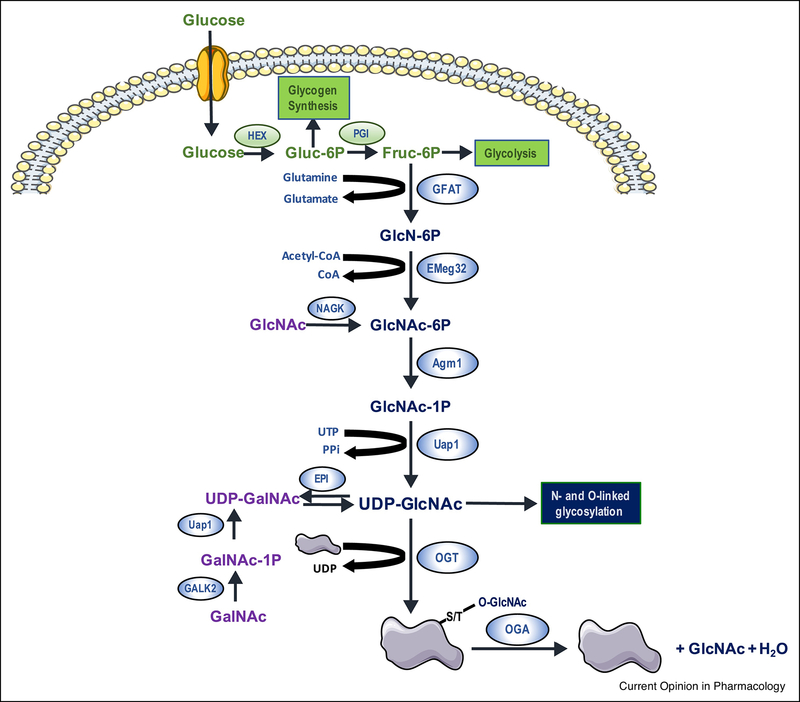Figure 1:
Schematic illustrating the hexosamine biosynthesis pathway (HBP) and protein O-GlcNAc turnover. Following its entry into the cell glucose is metabolized to fructose-6-phosphate, which is the branch point between the HBP and glycolysis. L-Glutamine: D-fructose-6-phosphate amidotransferase (GFAT), which regulates glucose entry into the HBP, converts fructose-6-phosphate to glucosamine-6-phosphate. Subsequent metabolism by glucosamine 6-phosphate N-acetyltransferase (Emeg32), Phosphoacetylglucosamine mutase (Agm1) and UDP-N-acetylglucosamine pyrophosphorylase (Uap1) leads to the synthesis of uridine-diphosphate-N-acetylglucosamine (UDP-GlcNAc). UDP-GlcNAc is the obligate sugar donor for (O-GlcNAc transferase (OGT) which catalyzes the formation of O-linked β-N-acetylglucosamine (O-GlcNAc)-modification on ser/thr residues of proteins. The removal of O-GlcNAc from the proteins is catalyzed by β-N-acetylglucosaminidase (OGA) resulting in unmodified proteins and free GlcNAc, which can re-enter the HBP following its phosphorylation to GlcNAc-6-Phosphate by N-acetylglucosamine kinase (NAGK). There is also a multi-step process where GalNAc is metabolized to UDP-GalNAc before subsequent conversion to UDP-GlcNAc by an epimerase.

